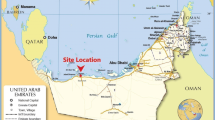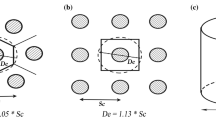Abstract
In this age of rapid urbanisation, due to the scarcity of space in prime locations especially in major cities, constructions are proposed even on refilled areas, either natural or engineering fill. In the present scenario, the major problem is the geotechnical issues acting as barriers to the construction of buildings in such areas. Basically, in engineering refill of opencast mines, proper precautions often cannot be taken for the selection of the refill material and care taken for the compaction is not so seriously dealt with. In the past, requirement of making such constructions on backfilled earth has not been envisaged. Such backfilled mines are often extremely heterogeneous which throws two different challenges. First one is to arrive at a safe bearing capacity which can be uniformly used for construction at the backfilled site. The other one is to decide the nature of foundation and structure which can be built safely with such low bearing capacity expected in such backfilled soil. The present paper is a very humble effort to issues with the living examples of two backfilled sites at Talcher, Odisha, India.








Similar content being viewed by others
References
S. Kumar, S.C. Dutta, L. Nainegali, Constructing structures on backfilled opencast mine spoil for better sustainability. Curr. Sci. 114(10), 2053–2062 (2018)
W.M. Kilkenny, A low-rise hospital development on restored opencast fill, in Second International Conference on Case Histories in Geotechnical Engineering, University of New Castle, Tyne, England 1988
K.S. Watts, J.A. Charles, Investigation of restored opencast mine backfill: long-term settlement, in Proceedings of 13th European Conference on Soil Mechanics and Geotechnical Engineering, 273–27, Prague 2003
J.A. Charles, The engineering behaviour of fill materials: the use, misuse and disuse of case histories. Géotechnique 58(7), 541–570 (2008)
J.A. Charles, D. Burford, Settlement and groundwater in opencast mining backfills. Eur. Conf. Soil Mech. Found. Eng. 9, 289–292 (1987)
J.A. Charles, D. Burford, K.S. Watts, Improving the load carrying characteristics of uncompact fills by preloading. Munic. Eng. 3(1), 1–19 (1986)
J.R. Cheeks, Settlement of shallow foundations on uncontrolled mine spoil fill. J. Perform. Construct. Facil. 4, 143–151 (1996)
Indian Standards (IS), IS 2131, Method for Standard Penetration Test for Soils (Bureau of Indian Standards, New Delhi, 1991)
J.E. Bowles, Foundation Analysis and Design (McGraw Hill, New York, 1988)
Indian Standard (IS), IS:2720 Part 13, Methods of Test for Soils (Bureau of Indian Standards, New Delhi, 1986)
K. Terzaghi, R. B. Peck, G. Mesri, Soil Mechanics in Engineering (Practice, 3rd Edition, 1996)
Indian Standard (IS) IS:1498, Unified Soil Classification System (USCS) (Bureau of Indian Standards, New Delhi, 1970)
IS 1888, Method of Load test on soils (Bureau of Indian Standards, New Delhi, 1982)
H. Dev, R. Singh, G.V. Ramana, R.P. Yadav, Determination of bearing capacity of gravel boulder deposit from footing load test, in Proceedings of Indian Geotechnical Conference, Paper No A 102, 13–15, Delhi 2012
Acknowledgements
The research presented in this article is a part of a project (Project No. EE46) funded by Ministry of Coal, Government of India, to arrive at an effective solution for a real-life problem for the populated countries.
Author information
Authors and Affiliations
Corresponding author
Additional information
Publisher's Note
Springer Nature remains neutral with regard to jurisdictional claims in published maps and institutional affiliations.
Appendix: Sample Calculations
Appendix: Sample Calculations
SPT Value (Test 1)
The SPT number from the borehole data obtained from SPT Test 1 can be calculated as Navg = (8 + 8+15 + 22 + 13 + 14 + 23 + 19)/8 = 15.25.
It is known that the range of the corrected N value will lie between ± 50% of the average N value as mentioned in the code [7]. Range of the corrected N value = 22.875 to 7.625. Hence, N value of 23 may be neglected. Thus, Ncorrected = (8 + 8+15 + 22 + 13 + 14 + 19)/7 = 14.14 ≈ 14.
SPT Value (Test 2)
The SPT number from the borehole data obtained from SPT Test 2 can be calculated as Navg = (25 + 30 + 33 + 25 + 20 + 31 + 24 + 35)/8 = 27.88.
It is known that the corrected N value will lie between ± 50% of the average N value as mentioned in the code [7]. Hence, range of the corrected N value = 41.81 to 13.94. Thus, Ncorrected = 27.
Bearing Capacity Calculation from Terzaghi’s Equation
The ultimate bearing capacity is given by the following equation
The values of Nc, Nq and Nγ can be calculated from the following equations as provided by the literature [10] are obtained as 3.29, 10.76 and 1.7, respectively.
Putting the corresponding values in Terzaghi’s bearing capacity equation, the ultimate bearing capacity is obtained as
The net ultimate bearing capacity is given by
The net safe bearing capacity is given by
where a factor of safety of 3 has been considered.
Finally, the safe bearing capacity is obtained as follows.
Rights and permissions
About this article
Cite this article
Kumar, S., Chattopadhyay, A., Dutta, S.C. et al. An Effort Towards Construction of Structures on Heterogeneous Soil of Backfilled Opencast Mines. J. Inst. Eng. India Ser. A 100, 523–534 (2019). https://doi.org/10.1007/s40030-019-00384-w
Received:
Accepted:
Published:
Issue Date:
DOI: https://doi.org/10.1007/s40030-019-00384-w




